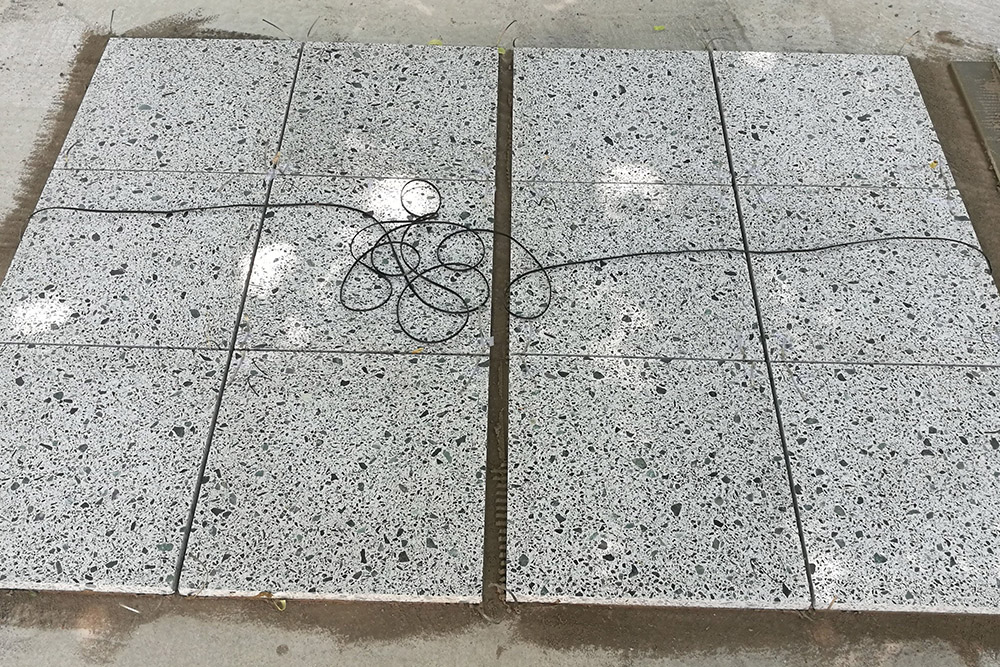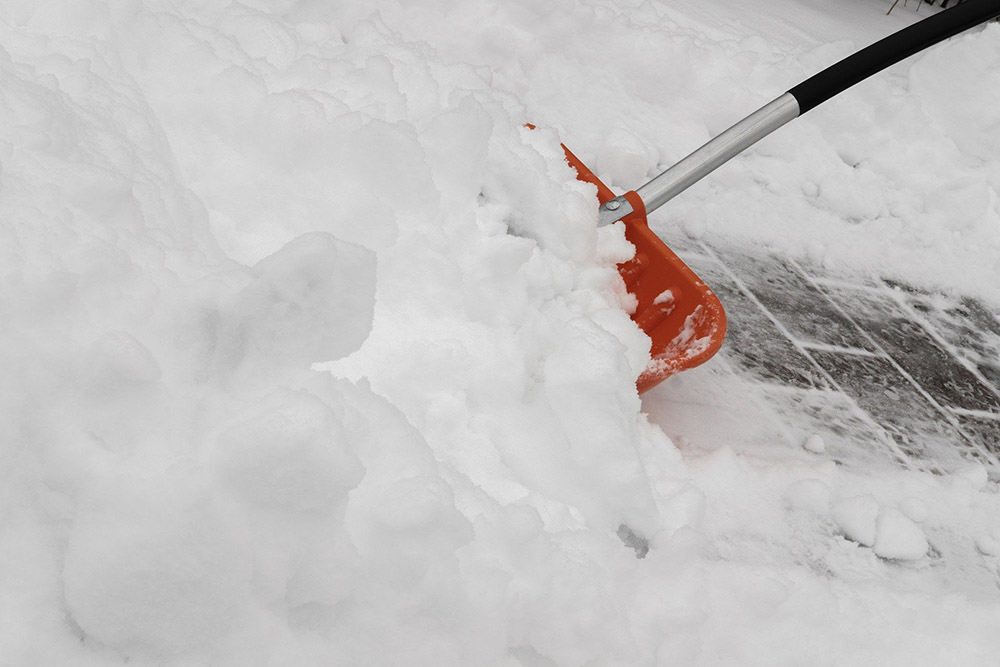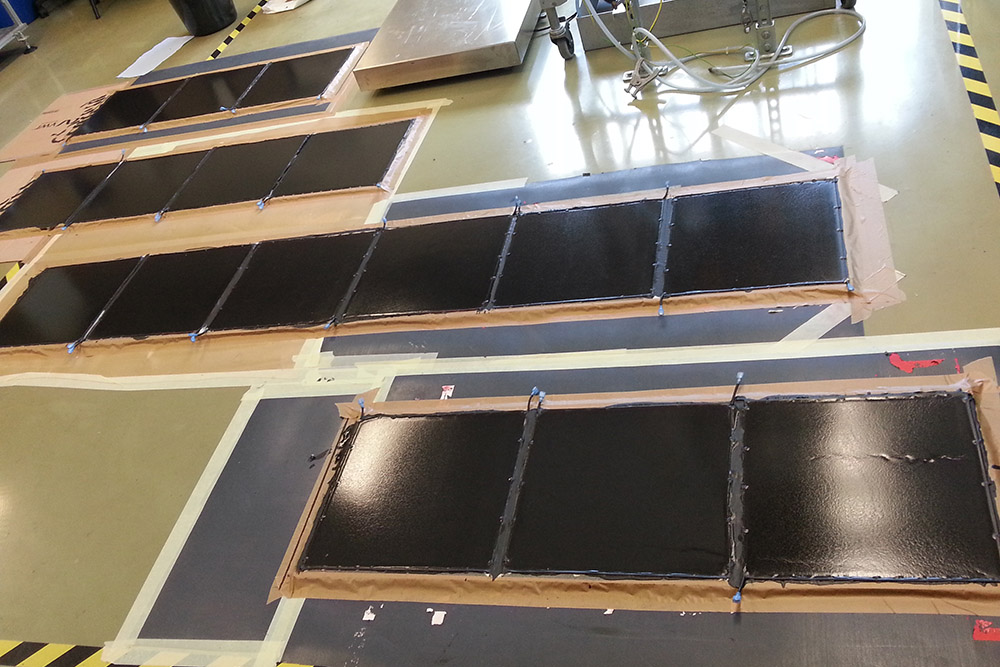Author: Sophie Hofmann
It’s thawing! – snow- and ice-free with heatable concrete slabs
It has become cold in Germany - and one thing is clear: with the icy season, homeowners and caretaker services have to clear snowed up or icy sidewalks and scatter salt. But did you know that this unpleasant work could soon be a thing of the past? Together with Betonwaren GmbH and the Mittweida University of Applied Sciences, the Fraunhofer IKTS has developed heatable floor slabs. The result: ice-free pavements, ramps, carports or platforms.
It's the coating that makes the difference
When I first heard about these heatable concrete slabs, I thought this is great. Because I also have to shovel snow at home in the Thuringian Forest during the winter. So how does it all work? Actually quite simple: An electrically conductive heating layer with embedded contact strips is applied to the underside of a stone slab and embedded in the adhesive mortar with the help of a spacer fabric. But of course it's not as simple as it sounds. Especially for the heating layer, on which the IKTS researchers were working, some tricky boundary conditions had to be solved:
- The heating layer should be a few millimeters thick and applied homogeneously.
- It should have a resistance that allows a heating output of several hundred watts per square meter at currents of up to 16 amperes.
- It should allow the diffusion of water to prevent deformation of the concrete slab.
- And last but not least: It should also adhere well to the concrete slab.

Due to their many years of experience in the field of nanocomposite layers, the IKTS scientists were able to quickly approach a solution. They went through various development steps: The IKTS team examined conductive fillers, investigated the influence of layer geometry, adjusted conductivity and adhesion, measured water vapor diffusion, specified application parameters, determined drying concepts and finally upscaled the heating conductor paste.
Meanwhile, two storable and well-applicable paste types are available for different applications. The pastes with the low resistance of 6 Ohm/square are used when very fast heating is required. If, on the other hand, the base plates are to be kept at a certain temperature permanently, the 40-Ohm paste is used. When heating the concrete slabs, a special feature comes into play: low voltage is used. One advantage of low-voltage heating systems is that local regenerative energy sources can be used and that there is no danger for the user in the event of a defect in the electrical insulation. In order to be able to optimally control the heating process, the Mittweida University of Applied Sciences has developed configurable and adaptive electronics.
More time for cocoa
Do you also think it’s a great idea? Then I have good news for you. We are currently working intensively on the market launch of heatable concrete slabs. Instead of shoveling snow, you can soon stay warm and enjoy a hot cocoa. By the way, did you know that ceramic grinders are used in the production of cocoa powder? But more about that another time.
We thank the BMWi for supporting the project "Development of a novel polymeric plate-integratable heating layer" (ZF4076418CL6).
Stay informed: You are welcome to subscribe to our newsletter, read our other blog articles and follow us on LinkedIn, Instagram and YouTube.


